Triple crankset, double crankset, compact crankset, Hollowtech II axle, GXP or BB30, it's easy to get lost in all the different crankset standards. crankset. Here's what you need to know.
Standards
- Axle type: Hollowtech, GXP, BB30, etc.
- Number of chainrings: 1, 2 or 3
- Number of compatible gears: currently 10 or 11
- Crank length: 165, 170, 172.5 or 175 mm
- Gears
Crankset types
The first thing to consider when choosing a crankset is the bottom bracket of your frame. Depending on the brand, there are different axle standards. To help you identify what you need, here's a list of the most common:
If the bottom bracket axle is part of the bottom bracket shell :
- ISO square: 12.5 mm tapered square axle at axle end
If the bottom bracket axle is part of the bottom bracket, also known as a through axle:
- Hollowtech II, Megaexo: 24 mm diameter axle
- GXP: 22 mm diameter axle on left, 24 mm on right
- Power-Torque: 1-piece 25 mm-diameter axle
- Ultra-torque: 2-piece 25 mm diameter axle
- BB30: 30 mm diameter axle
Please note that some road bikes feature an extended bottom bracket requiring a specific crankset, such as the 386EVO system, which is an extended BB30.
For the number of chainringstoday's trend is to limit the number of trays and increasing the number of rear gears. Reducing the number of front chainrings eliminates gear duplication and improves transmission life. The Triple is generally 30/39/50, the Compact 34/50 (110 mm center distance, allowing a chainring smaller than 38 to be fitted) and the Double 39/53 (130 or 135 mm center distance for greater rigidity above 38 teeth). On new-generation 4-spoke cranksets, the center distance is the same for Double and Compact cranksets, for greater inter-compatibility: 110 mm. Mid-Compact models also feature a small 36-tooth chainring and a large 52-tooth chainring, all on a 110 mm center distance. To date, the most widely used transmission is a Compact 34/50 with 11 speeds.
Like the rest of the drivetrain, the crankset is designed to operate under a gear standardSo you can't combine a 10-speed crankset with an 11V transmission, for example.
Once you've decided on the model you need, you'll have a choice of crank length between 165, 170, 172.5 and 175 mm. In theory, longer cranks offer greater leverage, so you'll have to push less; conversely, shorter cranks mean you'll have less distance to cover to make a turn of the crankset, making it easier to increase your pedaling cadence. But this phenomenon is not obvious to an amateur. What is true, however, is that it's important to have a crank length in proportion to the size of your legs.
Concerning the crankset teethThe fewer teeth the chainring has, the greater the effort required to turn the wheel. Ideal for hill climbs!
Which crankset for my riding?
When it comes to replacing cranksets, you don't necessarily have a choice beyond quality and teeth. The choice will depend on the type of gearbox (axle compatibility) and the number of chainring(s)/gears given by the shifters and derailleurs.
If you're simply looking to get some fresh air, a Triple chainring drivetrain will give you maximum versatility and flexibility on all types of outings, no matter how many gears you have on the rear.
For a good compromise between leisure and performancea Compact, generally in 34/50 and 11 speeds, will simplify your drivetrain to keep only the essentials, while maintaining a gear ratio range close to that of a Triple by opting for an 11-32 cassette, for example.
The performance first will be the essence of a Double 39/53 drivetrain with an 11-speed cassette, the gearing of which will depend on the profile of the outing, but an 11-28 will allow you to go everywhere for a courier.
At Time trial / Triathlon there are 2 schools of thought. Either a single-plate drivetrain, simple, reliable and terribly efficient for this discipline, but requiring careful choice of gearing according to the race profile. Or a double drivetrain with a shorter 11-25 cassette for a compromise between pure performance and versatility.
For crank length, the calculation can be summed up as follows:
- Inseam less than 81 cm: 165 mm cranks
- Between legs 81 and 83.5 cm: 170 mm cranks
- Between 83.5 and 86 cm: 172.5 mm cranks
- Over 86 cm inseam: 175 mm cranks
However, for the same inseam length, shorter cranks will enable you to increase your pedaling cadence more easily. Longer cranks make it easier to take on higher gear ratios.
Découvrez tous nos conseils & Tutoriels
ROAD - Cranksets and Cranks
-
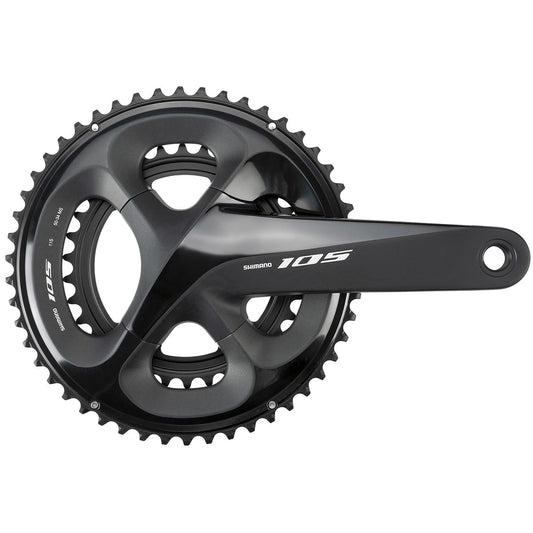
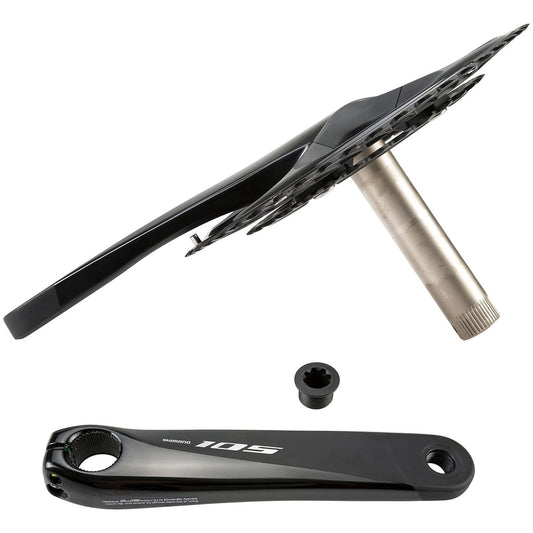
Crankset 11 Speed SHIMANO 105 R7000
Regular price 149,90 €Regular priceUnit price per -
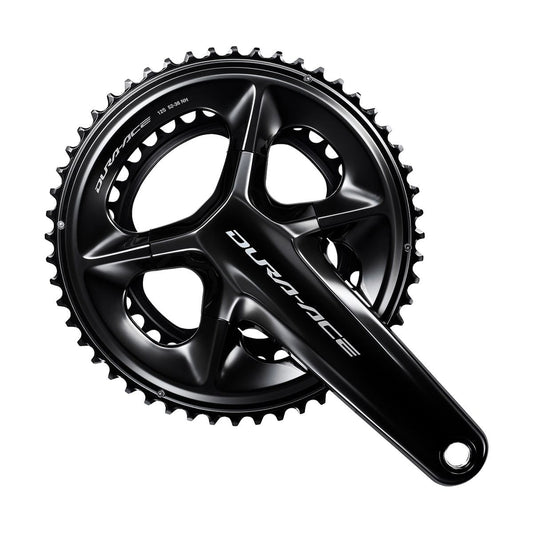
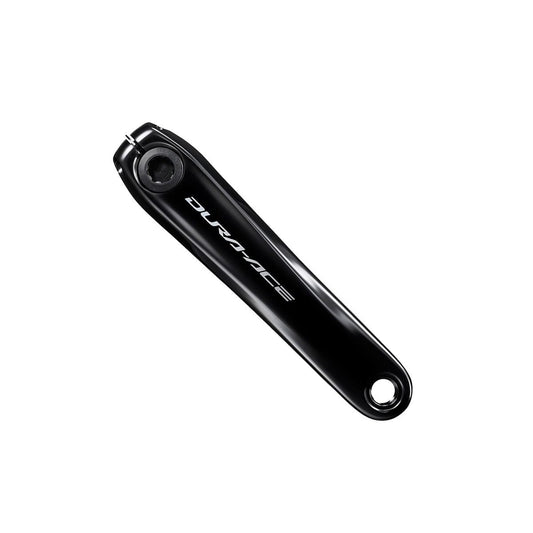
Crankset 12 Speed SHIMANO DURA-ACE R9200
Regular price From 429,90 €Regular priceUnit price per -
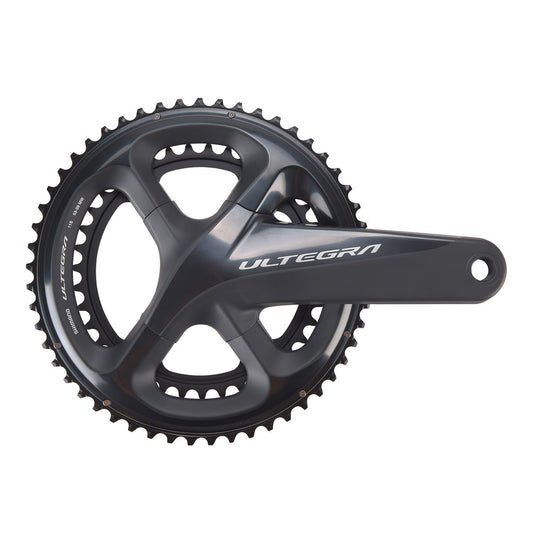
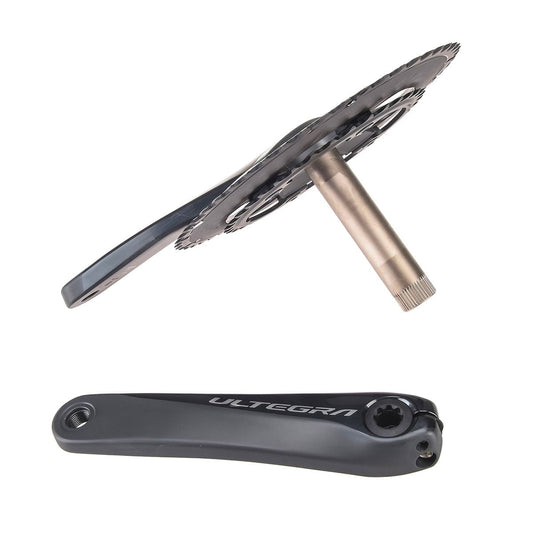
Crankset 11 Speed SHIMANO ULTEGRA R8000
Regular price 249,90 €Regular priceUnit price per -
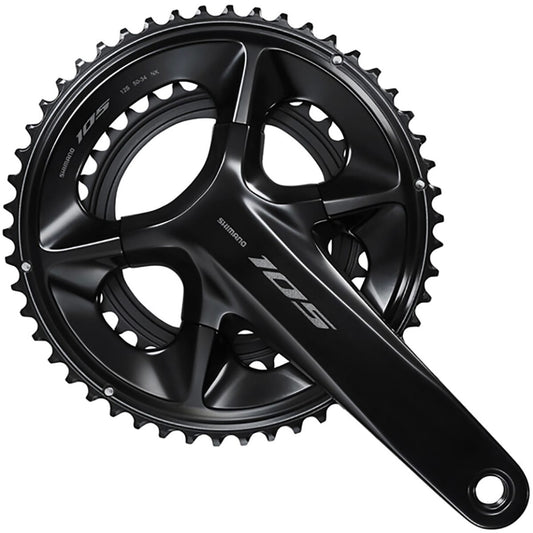
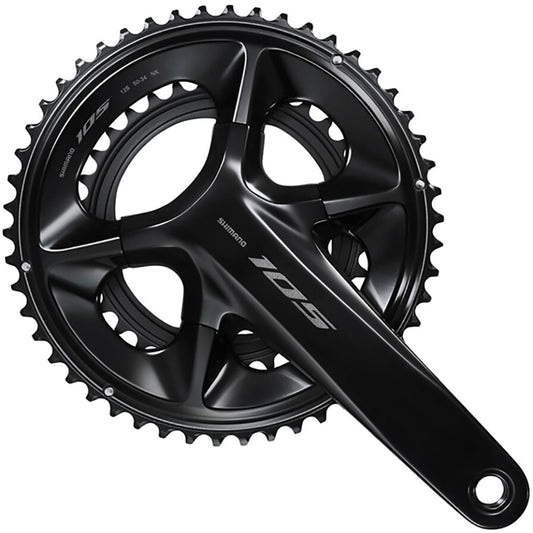
Crankset 12 Speed SHIMANO 105 R7100
Regular price From 139,90 €Regular priceUnit price per -
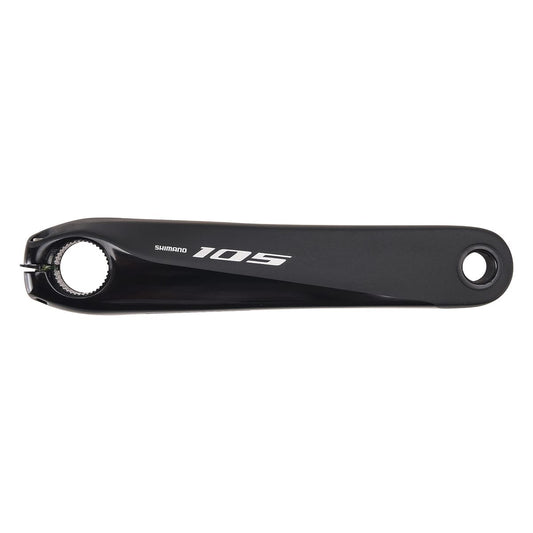
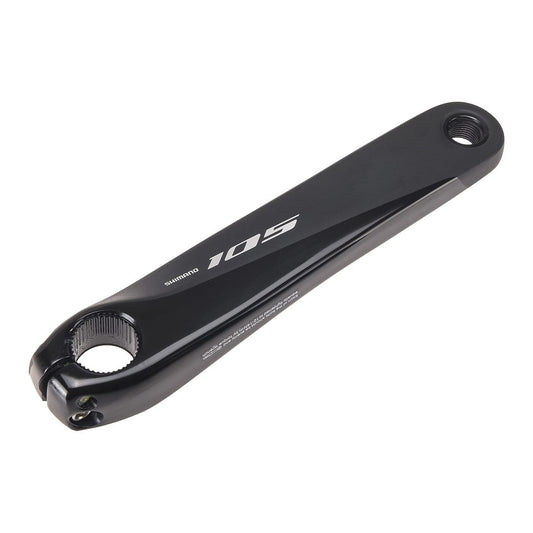
Crank Arms Left SHIMANO 105 R7000
Regular price 59,99 €Regular priceUnit price per -
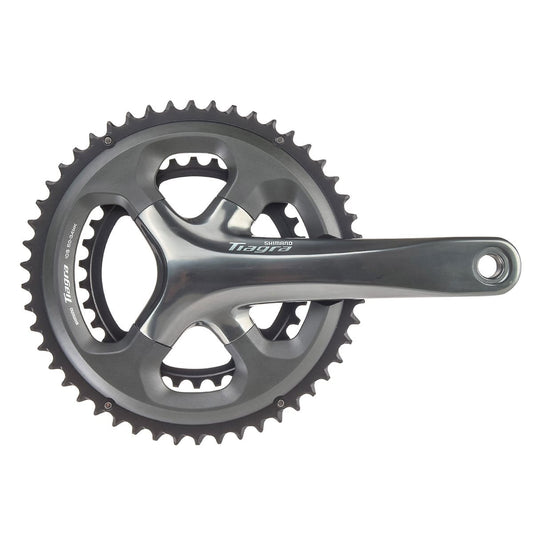
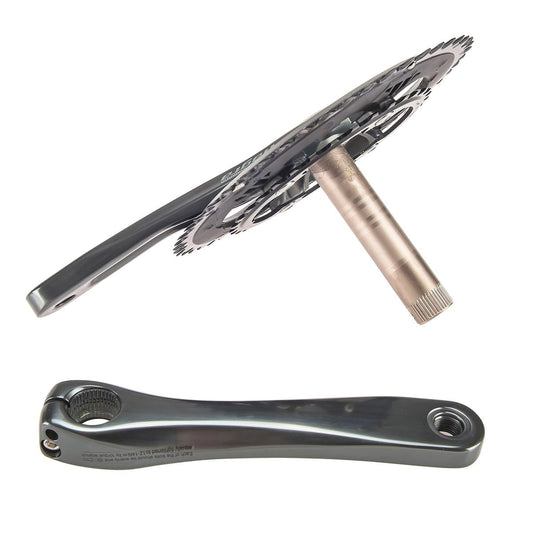
Crankset 10 Speed SHIMANO TIAGRA 4700
Regular price From 109,90 €Regular priceUnit price per -
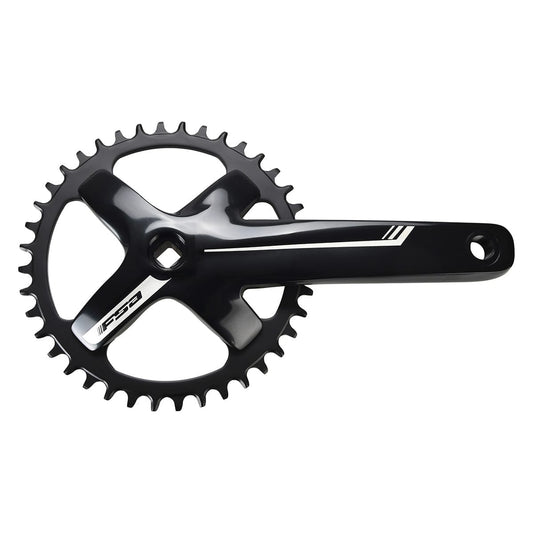
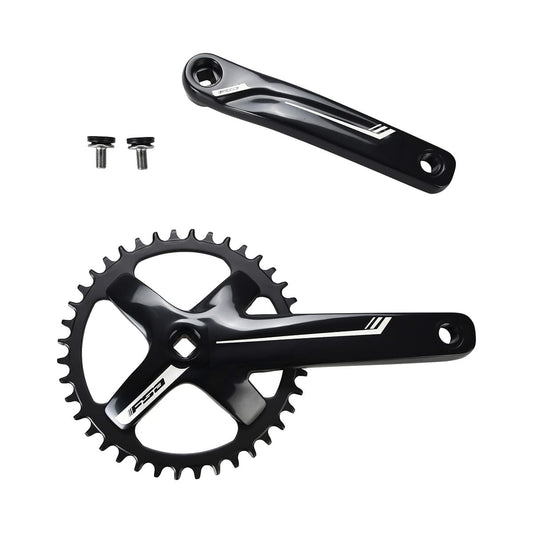
Crankset 10/11 Speed FSA VERO PRO Mono Black
Regular price 59,99 €Regular priceUnit price per -
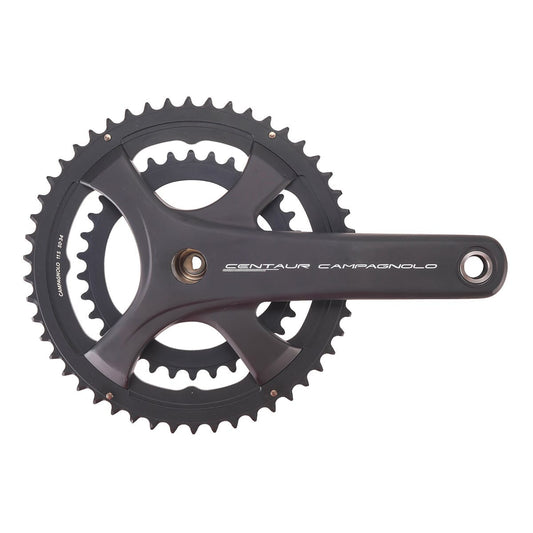
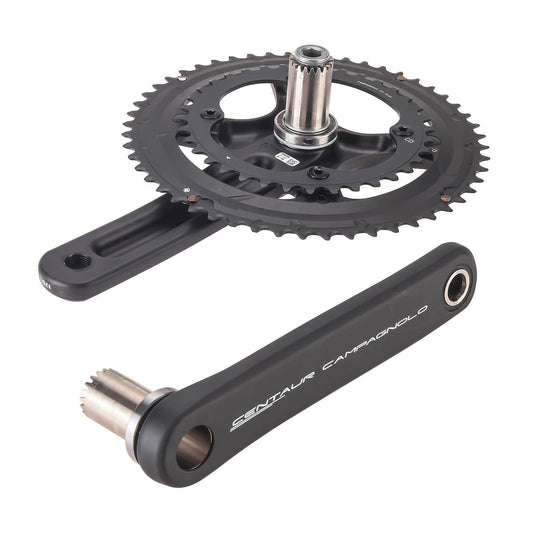
Crankset 11 Speed CAMPAGNOLO CENTAUR ULTRA-TORQUE
Regular price 164,90 €Regular priceUnit price per
















